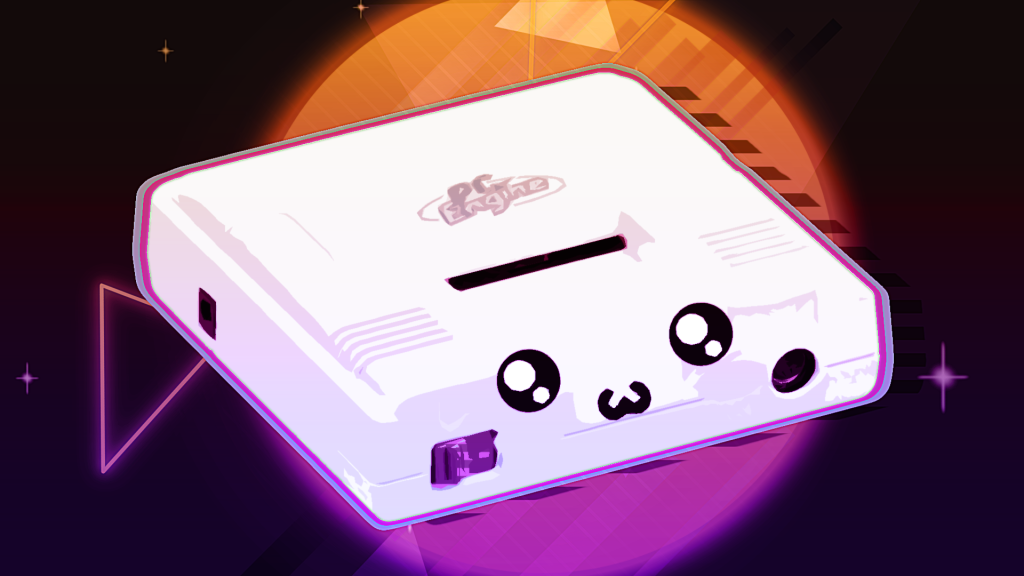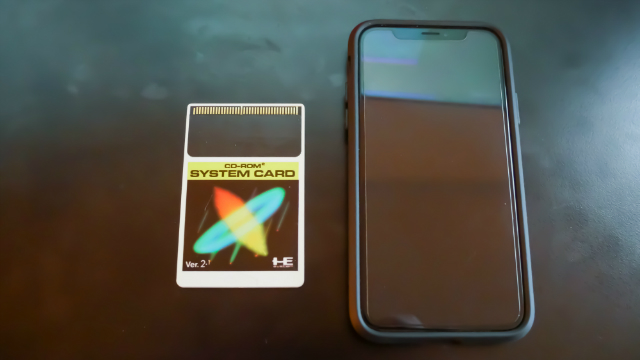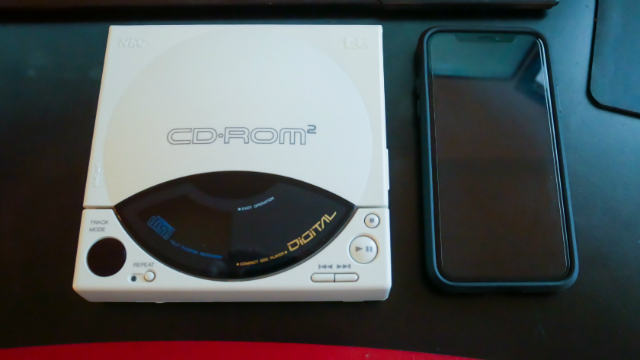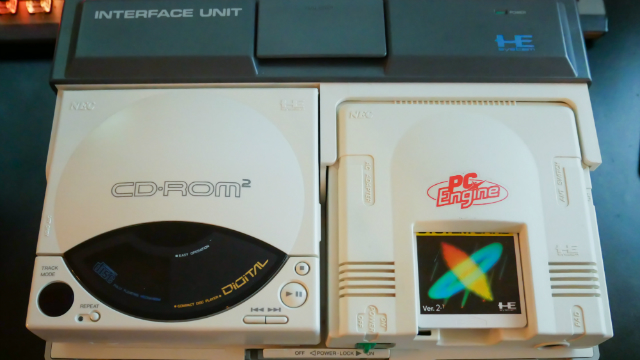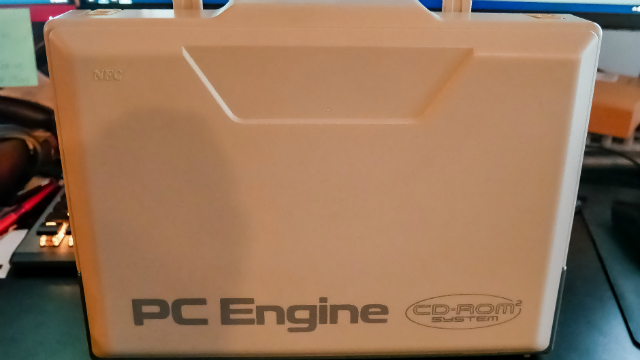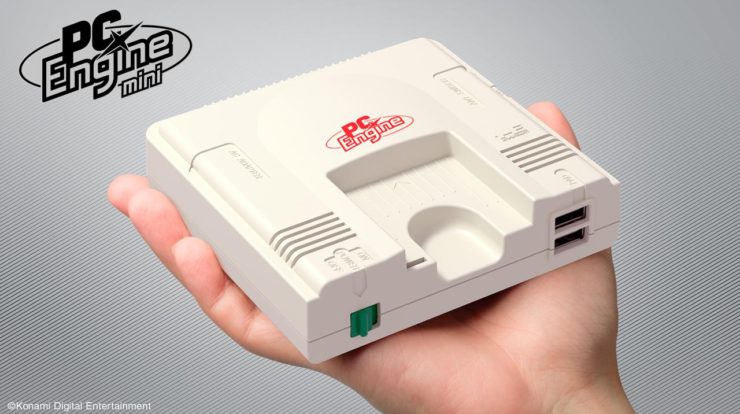The Turbografx Mini and PC Engine Mini are coming early next year, which is a big cause for celebration. Despite the console family doing well in Japan, NEC and Hudson Soft’s gaming platform didn’t quite strike gold in other territories. This means that these mini consoles will be many gamer’s first exposure to the fantastic world of the PC Engine.
Despite the excellent lineup announced for the mini consoles, this article is about the hardware, namely, the original hardware. I love the thicc Turbografx-16, don’t get me wrong, but the PC Engine still holds the title as the cutest console ever released. Unfortunately, these weren’t released outside of Japan, so most gamers haven’t gotten a chance to fully appreciate how adorable a PC Engine is. Fortunately, you have me to show you what you’ve been missing all these years, and why no console comes close to being as kawaii desu as the PC Engine
It’s small
When the PC Engine debuted in 1987, it had the smallest footprint of any major console on the market. This thing is tiny. It probably still holds the record for the smallest production console ever made. I don’t know if that’s actually true, but we’re gonna roll with it.
The PC Engine really has to be seen in person to appreciate just how compact it is. Again, the Turbografx-16 design is fantastic, but the shell is immense compared to the original hardware. It being the late ’80s I suppose they thought people needed it to be big or something. I’m not sure what the reasoning for adding so much unneeded plastic was, but I’m sure it’s some weird marketing thing.
As you can see in the picture above, the PC Engine is about two iPhone Xs wide and is a little shorter than one iPhone X. That’s gonna be my system of measurement because that’s what I had next to me when I took the photo. The iPhone X isn’t a colossal phone either. That’s insane to think that a system that outperforms the NES and gives the SNES a run for its money under certain circumstances came out in 1987 and was only a bit bigger than a paperback novel.
It uses little cards for the games
Since the PC Engine is so small, there’s no way to fit a big ol’ cartridge in there (~uguu). So, many games come on little wafers called HuCards (TurboCards outside Japan). HuCards are about the size of a credit card and add to the cuteness quotient of the PC Engine exponentially.
HuCards are the first games I remember coming in a CD-style case. In a time when most companies were still using cardboard boxes, Hudson Soft and NEC packaged their games in nice little cases that protected your games and made storing them on shelves easy. Like CD cases the manual slid into the front to serve as the cover. This means if you find them for sale today, they usually still have the manual.
It has a tiny CD drive you can link it to
Instead of coming up with a whole new console, NEC and Hudson Soft chose to expand the capabilities of the PC Engine with the CD-ROM2 system add-on. When the CD-ROM2 System was released in 1988 the PC Engine became the first(ish) dedicated gaming console to adopt the fledgling storage technology.
While the PC Engine is a capable machine by itself, the CD-ROM add-on takes it to a new level. The CD-ROM2 powers some of the best sound design of the era, but most importantly, it’s just as cute as the PC Engine. You connect the two machines with the interface unit, which packages both the PC Engine and CD-ROM2 in a tiny briefcase.
So, not only is the PC Engine the cutest console ever, but it also has the most adorable add-on ever. Even assembled, the whole unit takes up only a bit more space than a PS1. Also, since a good portion of the PC Engine’s library is on CD, the CD-ROM2 is likely the most successful console add-on of all time.
It’s stylish
When the PC Engine released, most game machines were gigantic. The huge Colecovision, Intellivision, and Atari 5200 were only a few years old, though support for them ran dry after the crash of 1983. Many people at the time were gaming on computers, which take up a ton of room, and the Famicom/NES and Sega SG-1000 were its primary competitors. While those consoles aren’t massive, the PC Engine makes them look gargantuan.
The styling of the PC Engine is quintessentially ’80s while also seemingly before its time. Especially in the US, “bigger is better” was the philosophy behind electronic design during that period and the PC Engine seems more fit for the 2000s when the obsession with making everything more compact came about.
Primary, the PC Engine looks friendly without giving off the vibe that its a toy. In the ’80s video games were still seen as something childish, and the compact, bright casing of the PC Engine struck a compromise that made it the best of both worlds. It’s durable and simple, which means it can take the wear and tear that children would put on it, but it’s also understated and neutral enough in design that an adult could place it in their entertainment center without fear of judgment.
The PC Engine manages to keep its own design language, which is something modern consoles lack. It’s not just some low-profile, utilitarian black box. It’s immediately recognizable, and that adds to its cuteness. It’s unashamed, it’s out there, and it screams for you to pick up the controller and start playing.
How do you make something so small, even smaller?
I’m not sure how Konami plans to make the PC Engine Mini be smaller than the original machine. In fact, I think they should have just made a repro instead of a micro-console. The PC Engine is the original mini console, and I’m glad that a new generation of fans are going to get to enjoy its unique and adorable stylings.
Unfortunately, getting ahold of the original PC Engine (or one of its derivatives) can be expensive in today’s market. However, if you pick up the PC Engine Mini and fall in love, it’s definitely worth the asking price to get your hands on the cutest console ever made.
